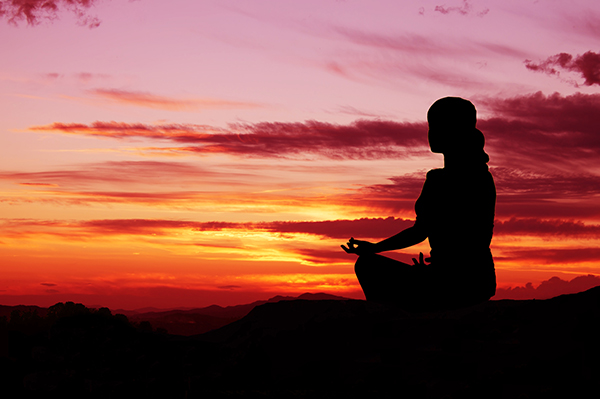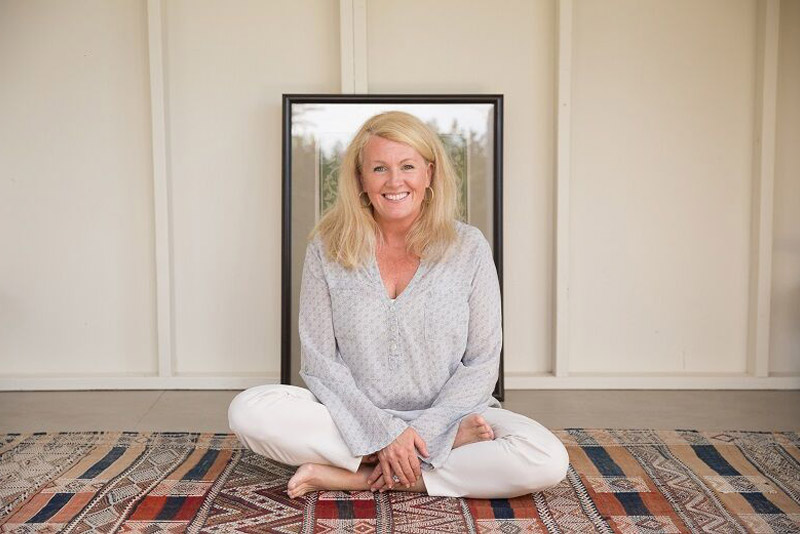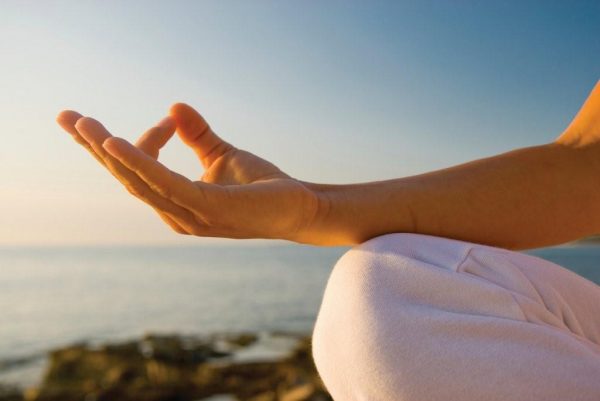The Practice of Silent Meditation

The Practice of Silent Meditation
Silent sitting meditation is still the main practice in Buddhism which was founded 25 centuries ago by Gautama Buddha. Buddha practiced and taught meditation as a universal remedy for suffering. Though Buddhism was born in India, its teachings travelled throughout the world to China, Nepal, Tibet, Japan, Burma, and all of Southeast Asia. Each time the practice met a new land, it would take on a different flavor.
There are many names for silent sitting meditation: Zazen, Sati, Shikantaza, Vipassana, Insight, Mindfulness, just to name a few.
As Buddhism passed through Burma, it found a home in Burmese monasteries which kept the teachings alive for many centuries. There it is called Vipassana, which literally means, “To see clearly” and refers to insight: insight into the truth of the ever changing nature of reality, impermanence, insight and seeing things as they really are.
The practice of Vipassana is about watching the mind’s activity, and to some, can be a practice that takes a whole lifetime. The purpose of the practice is to expand one’s awareness and to become more alert, or conscious. It is also a way of self-transformation through self-observation. Vipassana, meditation, Zazen, or insight practice is simple yet has profound effects on the mind and body.
Here’s how it’s done:
Sit in a reasonably comfortable and alert position. Some people sit in the traditional lotus posture (Indian style or cross-legged), others may choose to sit in a chair with their feet flat on the floor. Either way, your back and head should be straight, chin tucked in slightly. And you should be comfortable.
In Vipassana, this posture is with eyes closed. In Zazen (the Japanese Buddhist sitting meditation), your eyes will remain open, not wide open and not closed, but somewhere in between – open enough to allow some light in, some call this “capped”. You shouldn’t be staring at anything, your eyes should be relaxed and softly focused. The downward gaze of the eyes should be at about a 45 degree angle and rest on the floor about 2-3 feet in front of you. When gazing downward, keep your face straight ahead so that if your eyes were wide open you would be looking straight ahead. Only your gaze is cast downward, not your head.
You can hold your hands any way you like. In Zazen, the hands are held in a specific way to help to turn your attention inward: both hands held palms up. The right hand on the bottom holding the left hand palm up, so that the knuckles of both hands overlap. The thumbs are lightly touching, thus the hands seem to form an oval, which can rest on your thighs.
Breathe normally through your nose. Stay as still as possible and only change position if it is really necessary. While sitting, the primary objective is to be aware of the breath and the sensations of the breath moving in and out of the body. This practice is not a concentration technique, so while paying attention to the sensations of the breath; many other things will take your attention away.
Nothing is considered a distraction in this form of meditation, so when something else comes up, stop the attention on the breath, and shift the attention to whatever is happening until it’s possible to go back to your breath. This may include thoughts, feelings, judgments, body sensations, impressions from the outside world, etc. It is the process of paying attention, or watching, that is significant, not so much what you are watching. So remember not to become identified with whatever comes up: questions or problems may just be seen as mysteries to be enjoyed.
When you observe the breath, this allows the mind to become naturally focused. Another part of the Vipassana practice involves carefully “scanning” the surface of the body with one’s attention and observing the sensations with equanimity. This helps us to become more aware of the ‘impermanence’ of all things. This prepares one for another aspect of the practice which naturally unfolds – a non-attached observation of the reality of the present moment.
Whatever length of time you have determined you’ll meditate for, stick to it once you start. Whether it’s 10 minutes 20 minutes 30 minutes… don’t change your time commitment in the middle of your meditation because you suddenly feel restless and bored, or have the thought, “This isn’t working” or “I have too many emails to just sit here.”
To monitor the meditation period, you can use the vibrate mode of your cell phone’s alarm (turn the ringer off), or peak at your watch or a clock from time to time. Do not use an alarm that you have to get up to turn off. Make sure you stick to the allotted time, no matter what your mind says. Your mind is your first obstacle. Here is a timer we recommend: Zen Timer
Take your time coming out of it.
To end your meditation, sit for 2 – 3 minutes after without meditating with your eyes closed, you may want to jump up right away but don’t. Even if it doesn’t feel that way, when you meditate, you reach a very deep state of rest so jumping up in the middle of it can create a jolt to the nervous system, causing more stress. The 2 – 3 minute rest is an important time to integrate the silence into your daily activity. You can even lie down during that time.
End the meditation with a silent bow to yourself or a smile. Take your time coming out of the meditation.
The Extended Practice of Sitting Silent Meditation
I lived two years as a resident in a Zen Buddhist training center (the Japanese form of Buddhism), where there was a lot of silence. I craved the silence and loved living a simple life so close to nature. I practiced Shikantaza, which is a “goalless” meditation of quiet awareness: a form of Buddhist meditation. The training center was started in California by a Japanese priest named Taizan Maezumi Roshi. There were other Zen training centers in America run by his contemporaries, the most famous among them Shunryu Suzuki Roshi.
Sometimes we would observe a Day of Reflection during while we’d spend a day in silence and meditation, reflecting on the Buddhist precepts which we subscribed to: among them, nonviolence, reverence for life, non-stealing, conscious loving relationships, and truth in speech and action.
While our regular daily routine in the training center required us to meditate and work several hours a day, there were extended training periods from ten days to two months called sesshins. During a sesshin we’d devote ourselves exclusively to sitting (what they call meditation, or Zazen, in the Zen Buddhist tradition).
The periods we’d practice a walking meditation (called kinhin), formal meal meditations (called oryoki), and short periods of work (samu practice). Each activity was performed in silence with mindfulness. The meditation practice was occasionally interrupted by the teacher giving public talks, or sometimes we could silently leave to wait our turn for an individual private meeting (called dokusan) with the Zen teacher. We slept from five to seven hours a night, and our early morning meditation began shortly after four a.m.
A New Perspective
I found that I needed at least two to three days of sesshin to have my mind “settle down” into routine. It would become quiet enough for deeper self realization to begin. That’s when my mind stops its habits, and stops saying “you’ll be happier in a minute, or when this happens.”
Suddenly there’s a joy, a lightness, in everything – every simple moment. Brushing my teeth becomes an incredibly joyous experience, and I marvel as the toothbrush moves in my mouth. The very act of breathing, walking, drinking tea or chewing is a wondrous. Each moment is profound, and sometimes, if I am fortunate, everything becomes one: the tree is me. The squirrel is me. The vast, boundless sky is me. These are not words; this is an experience of reality, stark and wild and gorgeous.
Many people are seeking this new perspective. This experience of joy, of oneness, connectedness, and peace. Many are looking for a way out of the suffering they experience and they’re finding their way to meditation retreats all around the world. Whether you are Christian, Buddhist, Jewish, Hindu, Quaker, Muslim, or Atheist, silence is good for you. Silence is nondenominational. I encourage you to experience a deep silence, a deep peace, and to take time out for a silent retreat, even if it is only for a few hours at home alone.
Sarah McLean
Sarah McLean is an acclaimed teacher and thought leader who is determined to create more peace on this planet by helping people wake up to the wonder and beauty of their lives and the world around them through the practices of meditation and mindfulness. She inspires audiences everywhere blending the spirit of Zen wisdom with Vedic knowledge and self-inquiry. She helps demystify meditation and makes it accessible to anyone. It was over 30 years ago when she began her daily meditation practice, and moved in to a Transcendental Meditation community. There, she received advanced training in meditation and studied Ayurveda. Since 1993, when she became the education director for Deepak Chopra’s Center for Mind Body Health, she's been teaching contemplative practices and mind/body health. In 1997, she went to India to live in a traditional ashram in India, When she returned to the States, spent two years as a resident trainee in a Zen Buddhist monastery. She fell in love with Self-inquiry and served as the director of Byron Katie's School for the Work. In 2012, she founded the McLean Meditation Institute, home of the Meditation Teacher Academy which certifies meditation and mindfulness teachers through its 300-hour teacher training program. Her bestseller, Soul-Centered: Transform Your Life in 8 Weeks with Meditation, and her most recent book, The Power of Attention: Awakening to Love have received rave reviews. She now lives in Santa Barbara, California where she trains meditation teachers and offers online classes and lives a life she loves.






